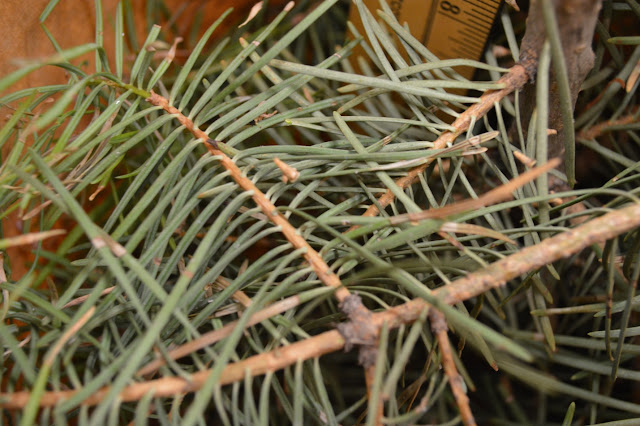Bagworm (Thyridopteryx ephemeraeformis)
(By Sean Mullahy, U of I Plant Clinic Student Worker)
The U of I
Plant Clinic received a very fun sample in today. What we thought was a bag
full of fir samples to be diagnosed, also contained a freshly hatched bunch of
bagworms! Bagworms are an extremely common pest of a large number of ornamental
woodies, including spruce, fir, locust, pine, sycamore, and so on. Bagworms are
one of the easiest pests to identify and remove, but are also one of the least
controlled.
A mature,
egg filled, bagworm cocoon
Baby
bagworms emerge from eggs in their mother’s bag in late spring, after spending
the entire winter inside. After the babies emerge they will almost immediately
begin to create their own casings from whatever debris they can find. After
making their casings they begin their upward climb to begin the ballooning
process. Baby bagworms will feed as they climb, and upon reaching the top of
their host will spin webbing of two to three feet in length, and swing off the
branches of their hosts. This process is called ballooning, and eventually the
wind will grab the bagworm to carry it to a new host. The bagworm hopes that
this new host will be suitable, but if not they can always balloon again. After
landing on a suitable host the caterpillars will begin to feed. They will start
on the upper side of leaves, but quickly make their way to the underside. They
prefer to feed from the tops of trees down, destroying it in their wake. As
they feed throughout the season they will continually add debris to their
casings to keep up with growth. Sometime in late August – early September they
will reach full maturity, and find a branch to pupate on.
Tiny,
recently hatched larvae fulfilling their destiny to climb ever upwards
Pupation is
around the time the bagworm lifecycle gets very interesting. Bagworms construct
a large cone shaped cocoons, making identification easy. The bagworm males will
emerge as moths after they finish pupating, the females however will finish the
rest of their days in the homes they spent the season constructing. The males
emerge as black moths with clear wings, and are about 1” in length. These will
fly around hunting for female bags to mate with. Once mating has occurred,
usually in late September, the female will lay her eggs in the bag. These eggs
will remain dormant until the spring when the caterpillars will emerge, eat
their mother’s corpse, and then begin the cycle anew.
Recently
hatched baby bagworms taking their first bites off of foliage, and beginning to
build their lifelong husk companions
Bagworms are
generally easy to control, if proper care is taken. The easiest time for this
would be in the fall when bags have formed. Once bags have formed on host
trees, they can be plucked off and collected, with burning being highly
recommended. This can be before or after males have emerged from their bags,
although after will ensure the destruction of eggs. The only problem with this
method, however, is that getting to the uppermost branches of hosts can be
difficult. It can also be quite easy to miss a large number of them hidden
among the branches. So this technique can thin numbers considerably, but is not
a method of complete control. Another check can also be done in spring to
remove bags before hatching. If spraying is necessary, late spring or early
summer, after the larvae have recently hatched is the best time to do so. If insecticide
applications are delayed too far, the worms will have become too big for easy
control and will most likely survive the application. It is best to get them
before they balloon onto other hosts.
A mature bagworm, in bag.




No comments:
Post a Comment
Note: Only a member of this blog may post a comment.